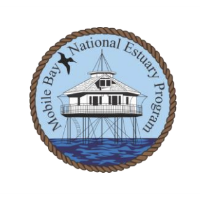MBNEP at work: Mobile Tensaw Apalachee Management Plan Draft Opens for Public Comment
A draft of the Mobile Bay National Estuary Program’s Mobile Tensaw Apalachee (MTA) Watershed Management Plan (WMP) was posted for public review and comment on June 5, 2023. Citizen feedback, a crucial part of the watershed planning process, is highly encouraged by the MBNEP. During the public comment period, the community is given the opportunity to voice concerns about known issues within the MTA Watershed as well as an opportunity to prioritize issues of concern and recommend strategies to address them. Comments on the Mobile Tensaw Apalachee Watershed Management Plan are being accepted through Monday, July 3rd. Please send comments to the attention of Christian Miller cmiller@mobilebaynep.com.
The vision of the WMP is to identify specific and achievable measures to restore, protect, conserve, and preserve features of the watershed which contribute to the coastal quality of life. As with other MBNEP WMPs, the MTA WMP describes current conditions and identifies areas of concern and potential actions to improve conditions.
The Mobile Tensaw Apalachee Watershed includes an approximately 40-mile-long stretch of braided rivers and bayous that course through cypress swamps, bottomland forests, marshes, and bogs that form what is termed the Mobile-Tensaw (Delta). It includes large portions of Mobile and Baldwin counties and drains waterways that flow from the northern boundary of the two counties until discharging into Mobile Bay.
The critical issues and areas identified by the WMP are predominantly related to the management of conservation lands and land use; water quality issues related to legacy contaminants and upstream pollutant inputs; hydrologic modifications and ecosystem resilience; management of protected/sensitive species and invasive exotic flora and fauna; and past, present, and future human uses.
The Plan, funded through from the Gulf Coast Ecosystem Restoration Council (RESTORE Council), is the culmination of work by the MBNEP and WSP (formerly Wood Environment & Infrastructure Solutions, Inc.). The WSP Team also included Barry A. Vittor and Associates, Goodwyn, Mills, and Cawood, Inc. (GMC), Anchor QEA, LLC, the Alabama Forest Resources Center (AFRC), Mullins Public Affairs Consulting (MPACT), Conservation Southeast, Inc., and Auburn professors Latif Kalin and Chris Anderson. The development of the MTA WMP was a concerted effort of specialized input from team members. Of particular importance to this WMP was the work of Moffatt & Nichol in developing the MTA Watershed Management Plan Scoping document in September 2017 for the MBNEP.
The mission of the Mobile Bay National Estuary Program is to promote the wise stewardship of Alabama’s estuaries and coast by using the best available science to measure status and trends, restore benefits of healthy ecosystems, build local capacity for environmental management and community resilience, and grow the number of citizen stewards across our region.
To download a copy of the draft plan, please visit: https://www.mobilebaynep.com/assets/uploads/main/MTA-Delta-MBNEP-Report-DRAFT_REVISED_06052023.pdf



